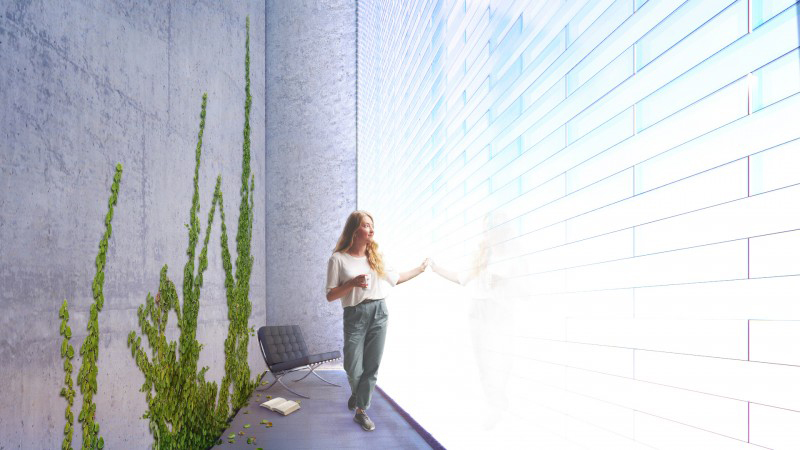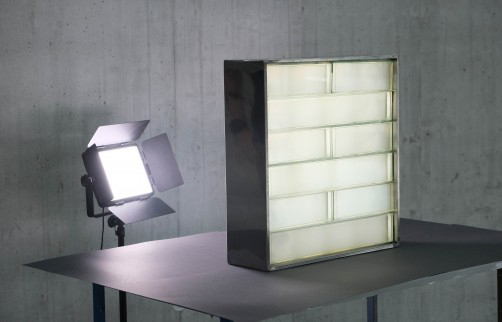Warming sunlight has been used to heat buildings since buildings were built. During the 1970s energy crunch, architects were seeking ways to increase natural heating from the sun by adding windows and skylights, orienting buildings to collect as much sunlight as possible, and generally thinking nature for benefits. But there was a corollary to heating by sunlight: how do you cool the same area in the hotter climates and days?
One approach was to use shades, blinds, and curtains to block the sun and regulate the heating value. More recently, technology has come into play. Glass bricks have long been popular in architecture for bringing more light into buildings. Until now, however, they have not been suitable for load-bearing walls and have not insulated well. A team from Empa, the Swiss Federal Laboratories for Material Science and Technology, has developed a translucent glass brick with good insulation properties thanks to aerogel, which can even be used for load-bearing elements. This makes it possible to build aesthetic, translucent walls that reduce the need for artificial lighting inside the building.

Silica aerogels are high-performance thermal insulation materials that are becoming increasingly popular in construction. The most common are opaque insulating mats and plasters. Back in 2017, Empa researcher Jannis Wernery and his colleagues had the idea of integrating the insulating material directly into a building brick and presented a new type of brick filled with aerogel, the so-called “Aerobrick.” Due to its excellent thermal insulation, this brick saves heating costs, without the need for an additional insulation layer applied to the masonry.

However, aerogel can also be virtually transparent, which makes for a translucent, insulating building system. To take advantage of this and further improve the insulating performance of the “Aerobrick,” a novel modular component was constructed based on float glass and silica aerogel granules that combines is translucent and insulating: the aerogel glass brick.
The glass bricks filled with translucent aerogel granules allow the construction of aesthetically pleasing and even load-bearing façade elements that enable a significant amount of daylight to enter. The Empa researchers achieved this combination of strength, insulation, and light transmission by using offset spacers between the glass panes within the glass brick, which ensure static stability with minimal heat transmission.
The aerogel glass brick is suitable for applications in which there are simultaneous requirements for high daylight penetration, glare protection, and privacy protection, such as in offices, libraries, and museums. An important aspect is that a building envelope made of such glass bricks couples the inside of the building with the outside in terms of daylight. This can have a positive effect on the circadian rhythm of the building users.
Possible applications include:
- Rooms that should not have a line of sight to the outside—for reasons of privacy, security, or to avoid disturbances–but should still allow diffuse daylight into the interior, such as libraries, galleries, museums, foyers, offices, stairwell cores, gymnasiums, multi-purpose halls, residential buildings, or art workshops.
- Spaces where daylight is necessary for a healthy circadian rhythm, such as dormitories, hospitals, and sanatoriums, as well as zoos, stables, and animal breeding facilities, and even greenhouses.
- Places where maximum daylight is to be brought in and space is to be saved, such as in densely built-up urban quarters with high-rise buildings and many city apartments.
- Architectural elements such as Trombe walls in solar architecture, courtyards, or atriums that generate heat from infrared radiation from sunlight.
An analysis of material costs shows that the insulating glass brick can be quite competitive in such applications. The glass brick thus offers architects new design possibilities for more daylight in buildings – both for new buildings and renovations. The researchers have now filed a patent application for the aerogel glass brick and are looking for potential industrial partners.
Want to tweet about this article? Use hashtags #construction #sustainability


